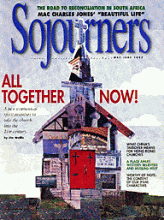In spite of the end of the civil war in El Salvador and a strong challenge in the March 16 elections to ARENA, the ruling party, by the opposition party, FMLN, there are still reports of human rights abuses in the country.
One part of the Salvadoran population that continues to suffer persecution is the nation’s indigenous people. Although more than 32,000 indigenous people were killed in "La Matanza," a 1932 military campaign meant to exterminate El Salvador’s native population, members of the Nahuatl, Lenca, Maya, and other native groups continue to live according to their traditional ways. According to a January 1997 U.S. State Department human rights report, these indigenous people are believed to be the poorest group in El Salvador, with 90 percent of them living in conditions of extreme poverty.
Members of the National Association of Indigenous Salvadorans (ANIS), one of the largest indigenous organizations in El Salvador, have been forced from their lands, received death threats, and suffered violence. On November 3, 1996, the entire Vasquez Ramirez family, part of ANIS, was murdered by the Jaguar Battalion death squad. In February 1997, the leader of ANIS, Chief Adrian Esquino Lisco, and his family were forced from their home by ARENA party activists.
Though the FMLN now controls many municipalities and one-third of the seats in congress, indigenous activists don’t necessarily expect this to improve their situation. "If the FMLN takes a positive approach," said Margarito Esquino, a leader of ANIS living as a refugee in Washington, D.C., "then the people will support them. If not, they won’t be able to do much because ARENA still controls the money and the military in the country."
Read the Full Article
